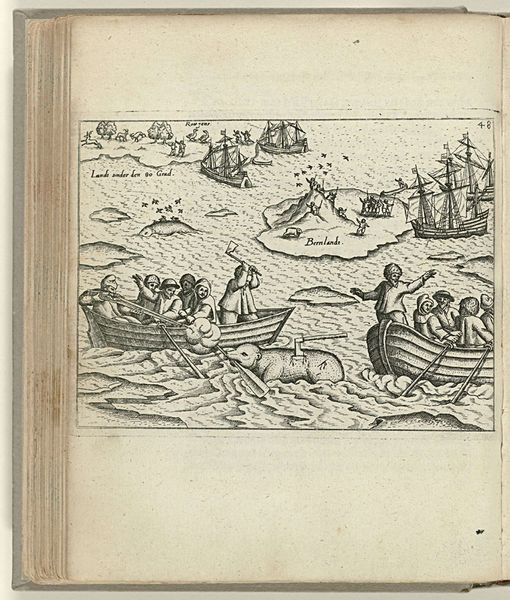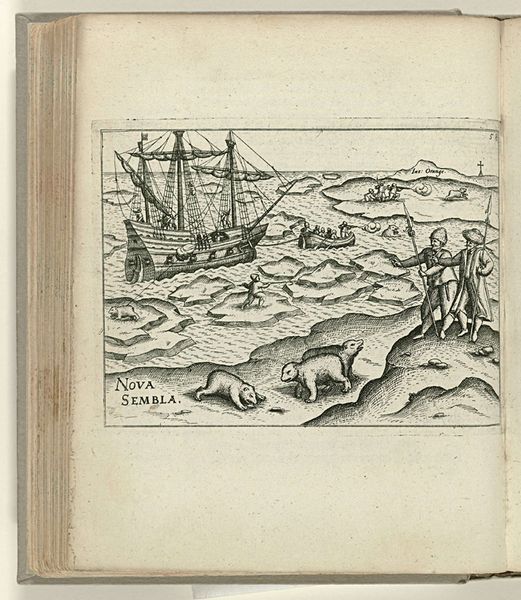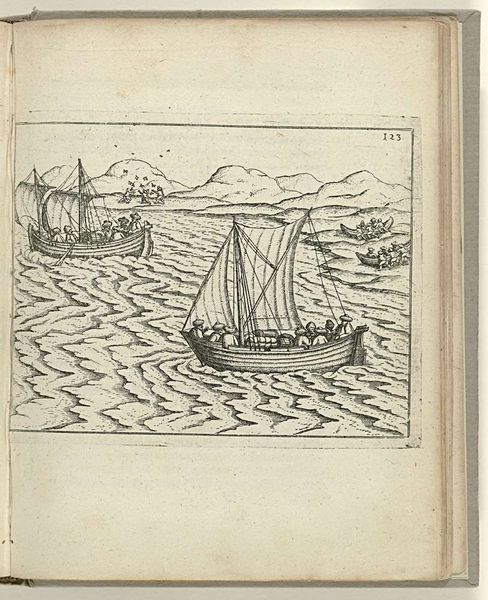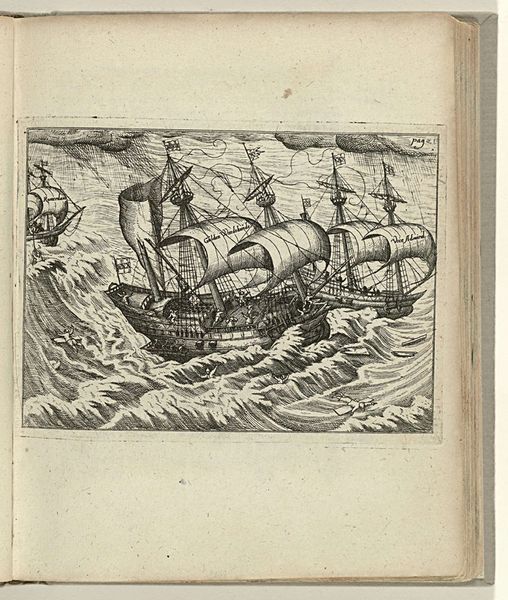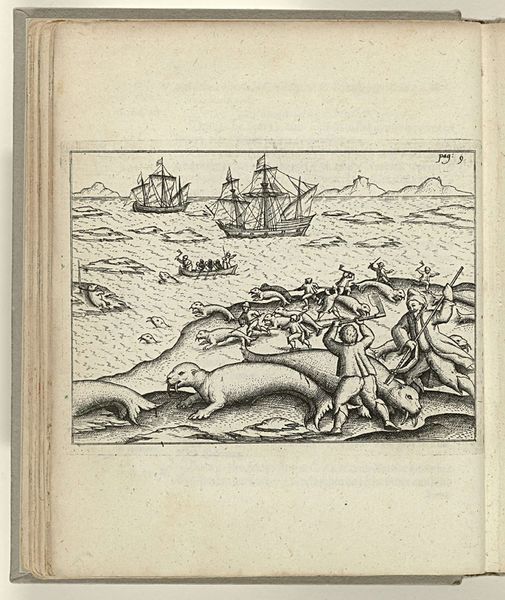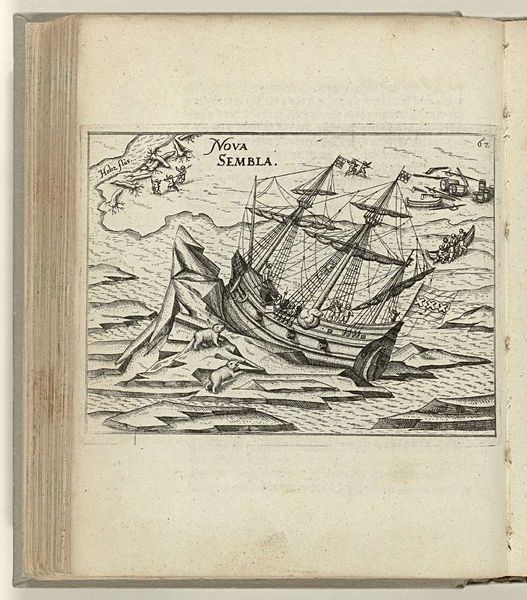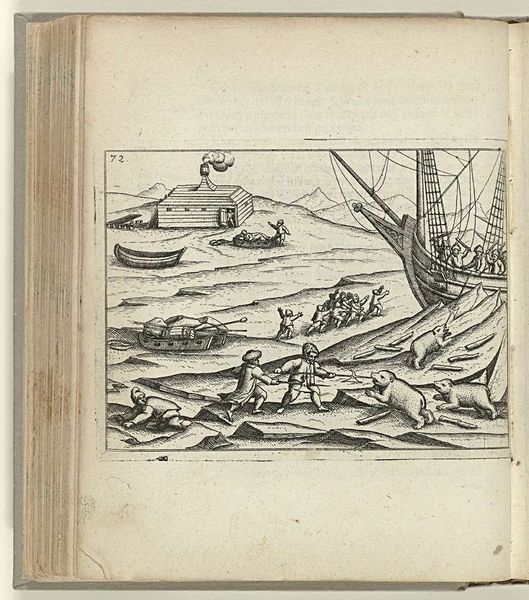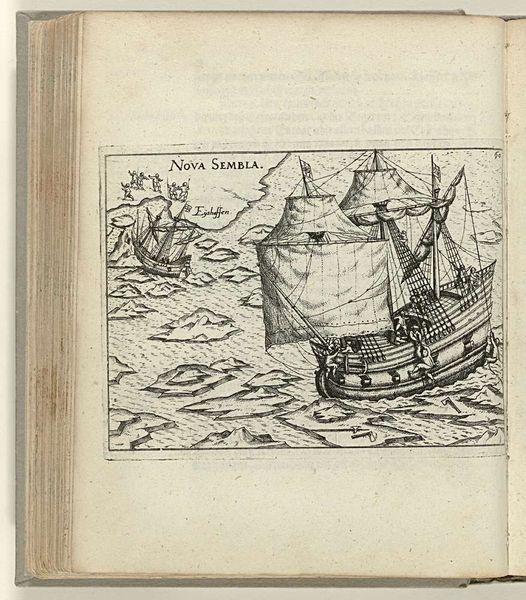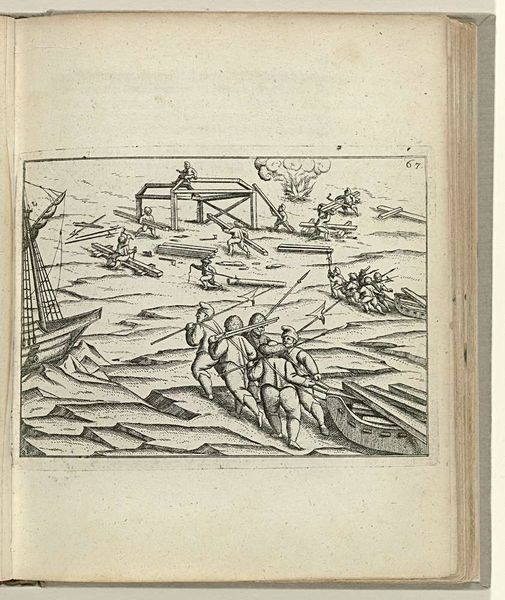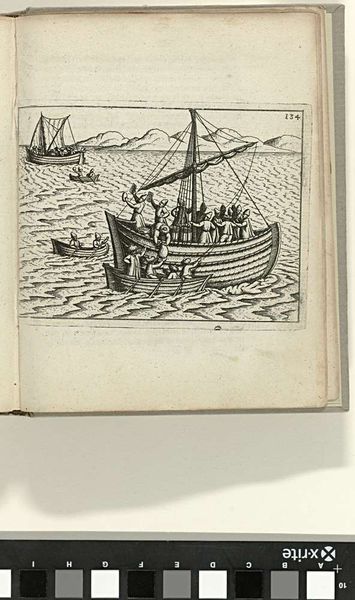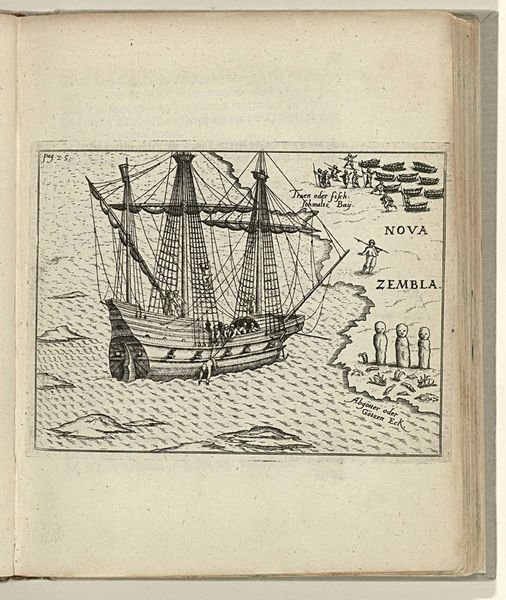
drawing, print, ink, woodblock-print, woodcut, engraving
#
drawing
#
aged paper
#
toned paper
#
medieval
#
narrative-art
# print
#
pen sketch
#
sketch book
#
landscape
#
figuration
#
11_renaissance
#
personal sketchbook
#
ink
#
ink drawing experimentation
#
woodblock-print
#
pen-ink sketch
#
woodcut
#
line
#
pen work
#
sketchbook drawing
#
history-painting
#
sketchbook art
#
engraving
#
sea
Dimensions: height 105 mm, width 145 mm
Copyright: Rijks Museum: Open Domain
This print, titled "Het vangen van een ijsbeer," or "The Capture of a Polar Bear," was made anonymously in 1594. It's an etching, a process where lines are incised into a metal plate, which is then inked and printed, resulting in the stark black lines we see here. Notice how the etcher uses varied line weights to create depth, with the choppy waves rendered through dense, repetitive strokes. The image shows the physical labor involved in capturing a polar bear. The sailors struggle in their small boats, a testament to human effort against nature. Prints like these were often made for wider distribution, feeding a growing market for images and information about distant lands. The etcher’s skill lies in translating a complex scene into a readily reproducible image, allowing viewers to vicariously experience the thrill and danger of early arctic expeditions. Thinking about this print, it’s easy to see how the seemingly simple process of etching, combined with the realities of labor and exploration, can convey a powerful narrative. It blurs the lines between documentation, art, and commerce.
Comments
No comments
Be the first to comment and join the conversation on the ultimate creative platform.
